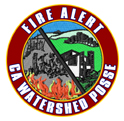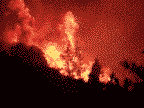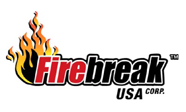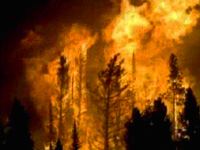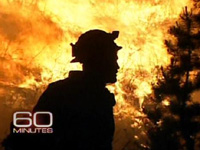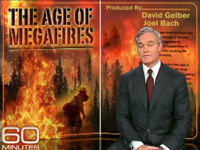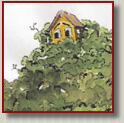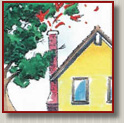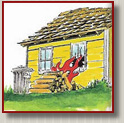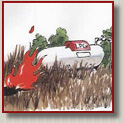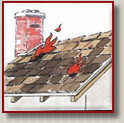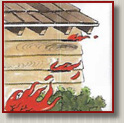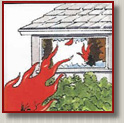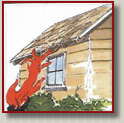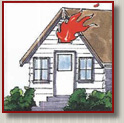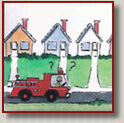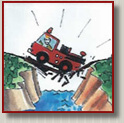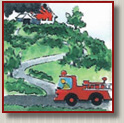 |
|
|
|
 |
 |
|
Interior Fire Safety |
 |
|
|
 |
 |
 |
|
1) Kitchen
- Keep a fire extinguisher in the kitchen
- Maintain electric and gas stoves in good operating condition
- Keep baking soda on hand to extinguish stove-top grease fires
- Move the handles of pots and pans containing hot liquids away from the front of the stove
- Place flammable curtains and towels away from burners on the stove
- Store matches and lighters out of the reach of children
- Properly store flammable liquids in approved containers and away from ignition sources such as pilot lights
2) Living Room
- Install a screen on your fireplace
- Store the ashes from your fireplace (and barbecue) in a non-combustible container and dispose of only when cold
- Clean fireplace chimneys and flues at least once a year
3) Hallway
- Install smoke detectors between living and sleeping areas
- Test smoke detectors monthly and replace batteries twice a year, when clocks are changed in the spring and fall
- Make sure that electrical outlets are designed to handle appliance loads
- Install child safety plugs (caps) on electrical outlets
- Replace electrical cords that do not work properly, have loose connections or are frayed
4) Bedroom
- If you sleep with the door closed, install a smoke detector in the bedroom
- Turn off electric blankets and other electric appliances when not in use
- Do not smoke in bed
5) Bathroom
- Disconnect hot appliances such as curling irons and electric irons when done; store in a safe location until cool
- Keep flammable items such as towels away from wall and floor heaters
6) Garage
- Mount a fire extinguisher in the garage
- Have tools such as a shovel, hoe, rake and bucket available for use in a wildfire emergency
- Install a solid door with self-closing hinges between living areas and the garage
- Dispose of oily rags in metal containers
- Store all combustibles away from ignition sources such as water heaters
- Disconnect electrical tools and appliances when not in use
- Allow hot tools such as glue guns and soldering irons to cool before storing
|
 |
 |
|
Exterior Fire Safety |
 |
|
|
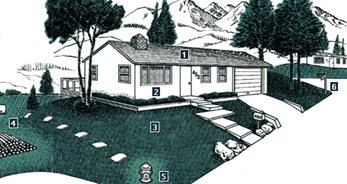 |
 |
 |
|
1) Roof
- Remove dead branches overhanging your roof
- Remove any branches within 10 feet of your chimney
- Clean all dead leaves and needles from your roof and gutters
- Install a roof that meets the fire resistance classification of "Class C" or better
- Cover your chimney outlet and stovepipe with a nonflammable screen of 1/2 inch or smaller mesh
2) Construction
- Build your home away from ridge tops, canyons and areas between high points on a ridge
- Build your home at least 30 feet from your property line
- Use fire resistive building materials
- Enclose the underside of balconies and above ground decks with fire resistive materials
- Limit the size and number of windows in your home that face large areas of vegetation
- Install only dual-paned or triple-paned windows
3) Landscape
- Create a "defensible space" by removing all flammable vegetation at least 30 feet from all structures and replacing it with fire resistive plants
- On steep slopes, remove flammable vegetation out to 100 feet or more
n Space native trees and shrubs at least 10 feet apart
- For trees taller than 18 feet, prune lower branches within six feet of the ground
n Choose ornamental landscaping plants that are fire resistive
- Reduce the number of trees in heavily wooded areas
- Maintain all plants by regularly removing dead branches, leaves and needles
4) Yard
- Stack woodpiles at least 30 feet from all structures and clear away flammable vegetation within 10 feet of woodpiles
- Locate LPG tanks (butane and propane) at least 30 feet from any structure and surround them with 10 feet of clearance
- Remove all stacks of construction materials, pine needles, leaves and other debris from your yard
- Contact your local fire department to see if open burning is allowed in your area; if so, obtain a burning permit
- Where burn barrels are allowed, clear flammable materials at least 10 feet around the barrel; cover the open top with a non-flammable screen with mesh no larger than 1/4 inch
5) Emergency Water Supply
- Maintain an emergency water supply, that meets fire department standards, through one of the following:
- a community water/hydrant system
- a cooperative emergency storage tank with neighbors
- a minimum storage supply of 2,500 gallons on your property
- Clearly mark all emergency water sources
- Create easy firefighter access to your closest emergency water source
- If your water comes from a well, consider an emergency generator to operate the pump during a power failure
6) Access
- Identify at least two exit routes from your neighborhood
- Construct roads that allow two-way traffic
- Design road width, grade and curves to allow access for large emergency vehicles
- Construct driveways to allow large emergency equipment to reach your house
- Design bridges to carry heavy emergency vehicles, including bulldozers carried on large trucks
- Post clear road signs to show traffic restrictions such as dead-end roads, and weight and height limitations
- Make sure dead-end roads and long driveways have turnaround areas wide enough for emergency vehicles
- Construct turnouts along one-way roads
- Clear flammable vegetation at least 10 feet from roads and five feet from driveways
- Cut back overhanging tree branches above roads
- Construct fire barriers, such as greenbelts, parks, golf courses and athletic fields
n Make sure that your street is named or numbered, and a sign is visibly posted at each street intersection
- Make sure that your street name and house number are not duplicated elsewhere in the county
- Post your house address at the beginning of your driveway, or on your house if it is easily visible from the road
7) Outside
- Designate an emergency meeting place outside your home
- Practice emergency exit drills regularly
- Make sure that electric service lines, fuse boxes and circuit breaker panels are installed and maintained as prescribed by code
- Contact qualified individuals to perform electrical maintenance and repairs
|
|
|
 |
 |
|
Coastside Fire Safe Council email Oscar Braun or call Oscar at 650-599-1592 | |
 |
 |
|
You Are At Risk... Home Owner's Watchouts!
Home Owner's "Watchouts" will allow you to evaluate your situation and set a plan to correct your concerns.
You don't have to live in a steel building or bunker to be safe. The two most important things you can do to protect your family and home is to have at least 30 feet between your home and the surrounding wildland fuels and have a roof that will not burn.
California is home to millions of residents who enjoy the state's beautiful scenery and warm climate. But most people do not realize that these qualities also create the MOST SEVERE WILDFIRE CONDITIONS IN THE WORLD!
Each year, thousands of acres of California wildland and hundreds of homes are destroyed during a fire season that lasts from May to October - and in some areas all year long.
If you live in the foothills, grasslands, or mountains of California, YOU ARE AT RISK!
Making the fire hazard even worse is the growing population in new communities that were once wildland areas surrounding California's major cities. This rapid growth places even greater strain on the state's firefighting forces, who can't place a fire engine at every home.
Fire protection is everyone's responsibility.
To protect your family and your possessions, you must follow certain steps -- both inside and outside your home -- to make your property "Fire Safe." |
 |
 |
|
Outside The Home "Watch Outs" |
|
|
 |
 |
|
Maintain at least a 30 foot clearance (more on steep slopes) of flammable vegetation around the house. Use fire resistant plants for landscaping . |
|
|
Remove all tree limbs from within 10 feet of the chimney. Remove all dead limbs overhanging or near the roof. |
|
|
A grass fire can climb up a tree and spread to other trees and then to your house. Remove all dead tree limbs near the ground. |
|
|
Remove all dry grass within 3 feet of the building. Keep all other dry grass with 30 feet of building mowed short.. |
|
|
Stack all firewood at least 30 feet from the house and cover it with a non-frammable cover. |
|
|
Remove all fammable material from within 15 feet of the liquid propane gas tank. |
|
|
Provide a pond, pool, tank etc with at least 5,000 gallons of water for fire protection use. Get a portable pump. | |
 |
 |
|
The Structure Itself "Watch Outs" |
|
|
 |
 |
|
Use ignition resistant roofing materials such as steel, tile or composition roofing. | |
|
|
 |
 |
|
Use ignition resistant siding such as aluminum or steel siding. Vinyl siding melts easily. Log wall are thick enough to resist fire. | |
|
|
 |
 |
|
Radiant heat from a wildfire can ignite materials inside the house especially flimsy curtains. Use double or triple glazed energy efficient glass to provide insulation and reflect radiant heat. Use non-flammable blinds. | |
|
|
 |
 |
|
Embers can collect in wind eddies under the eaves setting the house on fire. Box in eaves and use small guage screen to cover vent openings to keep sparks and insects out of the attic. | |
|
|
 |
 |
|
Embers and sparks can enter the attic and set the house on fire. Cover attic vent openings with small guage wire screen to keep sparks out . | |
|
|
 |
 |
|
Dry grass, sparks and embers under the deck can catch the house on fire. Skirt wood decks with non flammable siding backed by wire screen to keep out critters and fire. | |
 |
 |
|
From the Access Road "Watch Outs" |
|
|
 |
 |
|
Identify your home. Post a sign with the name of the road in reflective letters where people can easily see it on a dark rainy night. | |
|
|
 |
 |
|
If your street address is not clearly posted, the emergency services personnel may have to go house to house to find you. Post the house number in reflective numerals where it can be seen easily from the road. |
|
|
Large heavy emergency vehicles may not be able to safely cross the bridge to get to your house. Build bridges with sufficient capacity over creeks to accommodate the firetrucks and other emergency vehicles. |
|
|
Keep driveways wide enough and grade not to steep. Provide a hard surface that will support a fire truck. Reduce flammable vegetation at least 15 feet from sides of driveway and provide a turnaround/parking area near the house. | |
 |
|
. | |


